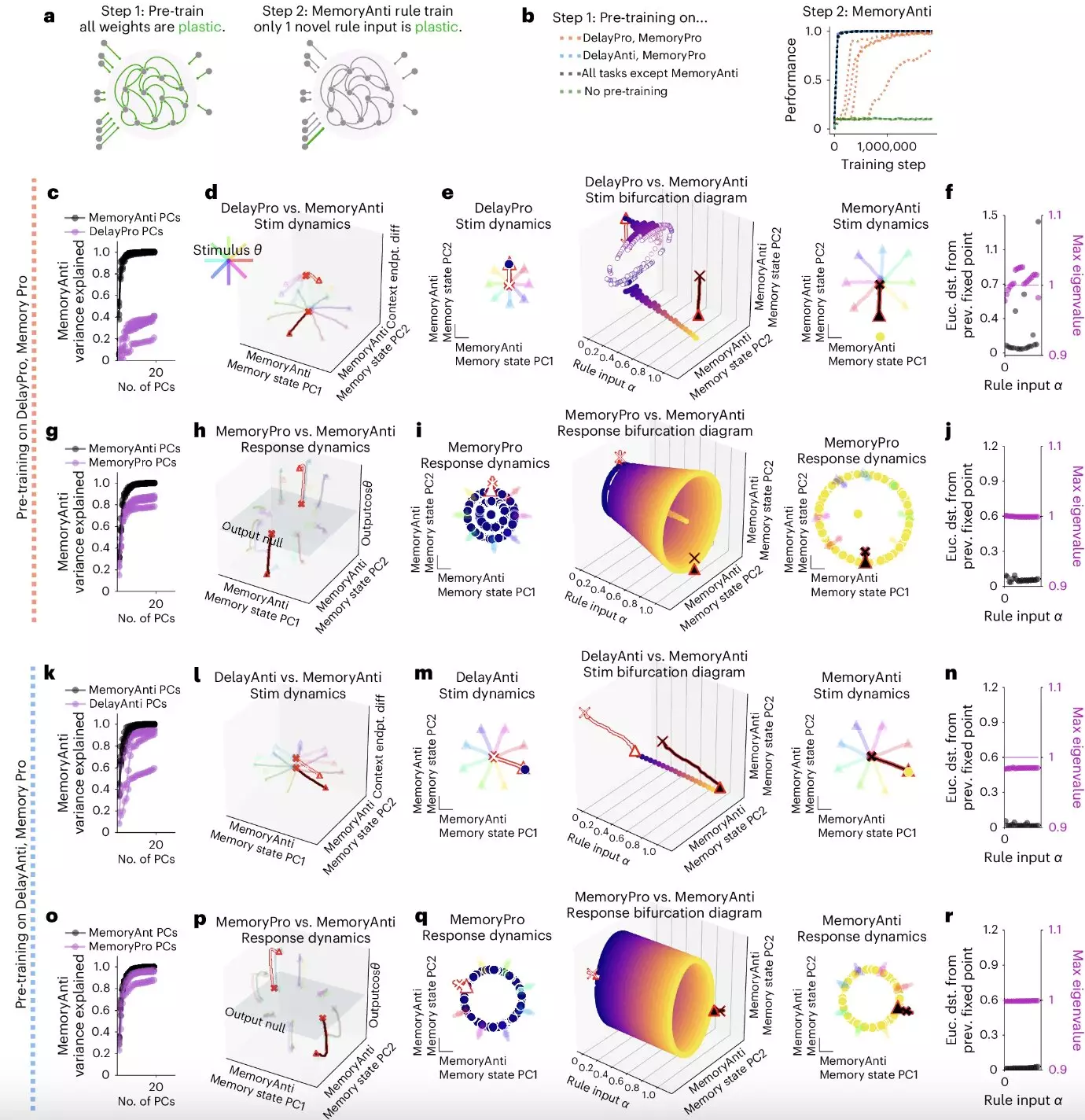Cognitive flexibility is a crucial human capability that allows individuals to switch rapidly between different thoughts and mental concepts. It supports multitasking, the acquisition of new skills, and adaptation to new situations. While artificial intelligence (AI) systems have advanced significantly in recent years, they still lack the same level of flexibility as humans when it comes to learning new skills and switching between tasks.
Artificial neural networks have been the focus of research in understanding cognitive flexibility. Computer scientists and neuroscientists have been studying neural computations using artificial neural networks, but most networks have been trained to tackle specific tasks individually rather than multiple tasks. In a recent study conducted by researchers at New York University, Columbia University, and Stanford University, a single neural network was trained to perform 20 related tasks.
The key objective of the study was to investigate the mechanisms underlying the computations of recurrently connected artificial neural networks. The researchers identified a computational substrate in these networks that enables modular computations, which they termed “dynamical motifs.” These dynamical motifs are recurring patterns of neural activity that implement specific computations through dynamics, such as attractors, decision boundaries, and rotations.
The researchers found that in convolutional neural networks, dynamical motifs are implemented by clusters of units when the unit activation function is restricted to being positive. Lesions to these units were shown to adversely impact the ability of the networks to perform modular computations. The study revealed that motifs can be reconfigured for fast transfer learning after an initial phase of learning, establishing them as a fundamental unit of compositional computation.
The findings of the study have significant implications for both neuroscience and computer science research. By understanding the neural processes that underpin cognitive flexibility, researchers can develop new strategies to emulate these processes in artificial neural networks. This could lead to the development of more flexible AI systems that are capable of effectively tackling multiple tasks. As whole-brain studies continue to evolve, the dynamical motif framework will guide questions about specialization and generalization in neural networks.
The study highlights the importance of cognitive flexibility in artificial neural networks and how understanding modular computations and dynamical motifs can improve the performance of these networks. By studying the mechanisms that support cognitive flexibility, researchers can contribute to the development of more flexible AI systems that can adapt to new tasks and situations more effectively.


Leave a Reply